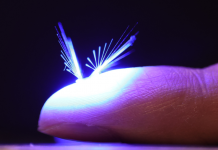Building upon their previous achievements of creating a robot that could navigate simple mazes without human or computer guidance, researchers have developed a “brainless” soft robot capable of navigating through an intricate and ever-changing environment
A new soft robot capable of turning on its own has been released, enabling it to successfully make its way through twisty mazes and negotiate its way around moving obstacles.
“In our earlier work, we demonstrated that our soft robot could twist and turn through a simple obstacle course. “However, it was unable to turn unless it encountered an obstacle. In practical terms, this meant that the robot could sometimes get stuck, bouncing back and forth between parallel obstacles,” says Jie Yin, co-corresponding author of a paper on the work and an associate professor of mechanical and aerospace engineering at North Carolina State University.
Unveiling asymmetrical soft robots
Physical intelligence relates to the capabilities exhibited by dynamic entities, such as soft robots whose behaviour is primarily determined by their inherent structural design and the materials constituting them, rather than relying on external computer or human control.
The newly developed soft robots are constructed from flexible liquid crystal elastomer ribbons, as with their earlier visions.
When these robots are placed on a surface hotter than 55 degrees Celsius, a section of the ribbon touching the surface makes contact while the exposed portion remains unaffected. This contraction initiates a rolling movement, with the speed of the robot’s rolling being directly proportional to the temperature of the surface; the hotter the surface, the quicker the robot’s rolling motion.
Soft robots ability
However, while the previous version of the soft robot had a symmetrical design, the new version exhibits an asymmetrical configuration. The robot now comprises two distinct sections: one half resembles a twisted ribbon extending linearly.
In contrast, the other half takes on the form of a more tightly twisted ribbon, coiling upon itself like a spiral staircase. This asymmetrical design results in one end of the robot exerting greater force on the ground than the other end.
To illustrate, consider a plastic cup with a wider mouth than its base. When rolled across a table, it doesn’t follow a straight path but instead traces an arc as it moves. This deviation is a consequence of its asymmetrical shape.
“The concept behind our new robot is fairly simple: because of its asymmetrical design, it turns without having to come into contact with an object,” says Yao Zhao.
“This work is another step forward in helping us develop innovative approaches to soft robot design.”
The researchers showcased how the non-uniform design of the asymmetrical soft robot enables it to effectively traverse intricate mazes, even those featuring walls in motion, and effortlessly pass through openings narrower than its body dimensions.
To evaluate its performance, the researchers tested the new robot design on both metallic surfaces and within sand environments.














